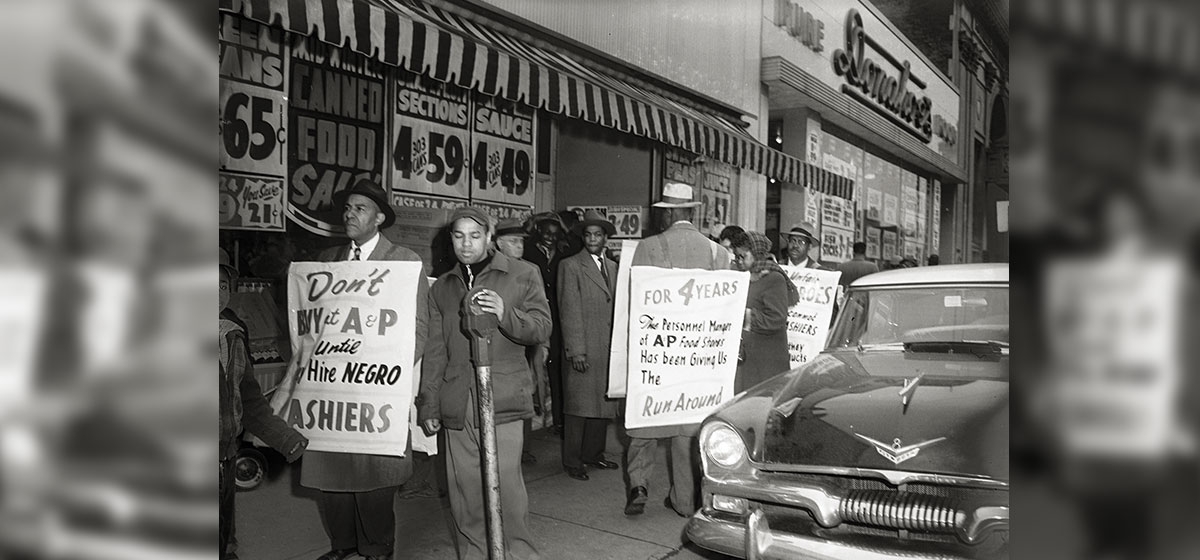A Checkered Past

Renaissance, schmenaissance. To read Joe W. Trotter and Jared N. Day’s new book, “Race and Renaissance: African Americans in Pittsburgh Since World War II,” is to realize an inconvenient truth. The skies above our city may have cleared, but racial inequities of generations past still cast a pall on the quality of life for many people in post-industrial Pittsburgh.
It’s a pretty sure bet that those who boast of “America’s Most Livable City” haven’t considered it from the perspective of Trotter and Day.
This new work represents the first history published on the complex topic of African American life in Pittsburgh in the second half of the 20th century. Its June release coincided with the University of Pittsburgh’s major conference, “Race in America: Restructuring Inequality,” which identified on a national level many of the same issues, including de facto segregation, scholastic achievement gaps, substandard healthcare and gross imbalances in the criminal justice system. “Race and Renaissance” brings these problems home; tracing the threads of their origins in the pattern of Pittsburgh’s history.
Like most area ethnic groups, the African American population of Pittsburgh was established in the latter part of the 19th century, when the burgeoning steel industry attracted thousands of laborers seeking employment. However, African Americans relocating from the rural south discovered that they were not welcomed in the mills, since popular misperception deemed them “inefficient,” “unstable” and “unsuitable” for mechanized labor. In addition, they found themselves in competition with white immigrants from central and eastern Europe who flatly refused to work alongside people of color and specifically barred them from their trade unions.
Consequently, the earliest black steelworkers entered the industry as strikebreakers recruited to discourage the efforts of organized labor. Once established in these positions, African Americans continued to be excluded from other occupations. Even as late as 1942—seven years after the enactment of Pennsylvania’s equal rights law—“50 percent of Pittsburgh firms barred blacks from employment” or “relegated them to the lowest rungs of their employment ladder.”
The so-called Great Migration brought many more African Americans north to Pittsburgh between 1910 and 1930, precipitating a chronic housing crisis that has never been fully resolved. Overcrowding led to the creation of makeshift neighborhoods “in hollows and ravines, on hill slopes and along riverbanks, by railroad tracks and in mill-yards.” Predominantly black communities developed in Homewood, East Liberty, the South Side and elsewhere, but it was the Hill district, close to Downtown, that developed into the commercial and social hub of African American life in Pittsburgh.
Because “virtually every institution serving the public discriminated against blacks in some form or fashion,” African Americans between the world wars “intensified their community building activities.” A proliferation of religious, fraternal, business and professional organizations transformed the Hill into a “cohesive industrial-age black urban economy” that was “‘pound for pound’ the ‘most generative’ black community in the United States.”
Famed for jazz and jitneys, numbers runners and Negro-League baseball, this celebrated “city within a city” also produced a prosperous black middle class that led the way to civic engagement between the races. By the 1930s, some members of this new class began to assume prominent positions in the life of greater Pittsburgh; at the bar, on the bench and in the legislature. Robert L. Vann of the Hill-based Pittsburgh Courier went all the way to Washington, as an advisor on race in Franklin Roosevelt’s famous “black cabinet.” Due in part to his influence, African Americans in Pittsburgh received “disproportionately more benefits from government social programs than whites” during the Depression.
Another important advancement came when, on the eve of World War II, Roosevelt signed an executive order banning discrimination in government employment, defense industries and training programs, thus empowering African Americans in Pittsburgh and elsewhere by increasing and improving employment opportunities. In turn, the economic recovery brought about by wartime expansion led to “substantial material and social progress” for blacks in the post-war years. By the late 1940s, community organizers, ward-level activists, lawyers and legislators here had formed a strong and effective alliance dedicated to increasing the African American political presence and equalizing access to all aspects of city life.
In 1951, four years before Rosa Parks famously refused to surrender her bus seat in Montgomery, Ala., two Pittsburgh men took a similar stand by attempting to swim in the all-white pool in Highland Park, only to be forcibly ejected by a “gang of a hundred whites… hurling epithets.” Their action, in concert with a lawsuit filed by a group of black attorneys, successfully desegregated the facility, although it did little to change popular attitudes. Some other area pools—including that at Kennywood amusement park—were either filled in or converted to new uses to avoid combining the races. Undaunted, integration efforts persisted, and little by little, barriers continued to fall throughout the 1950s and ’60s. One of the most significant triumphs came in 1967, when banker and realtor Robert Lavelle sued the all-white Greater Pittsburgh Multilist, achieving access to properties in historically white neighborhoods.
But the irony of the postwar Civil Rights movement in Pittsburgh was that victories for equality and integration weakened the cultural cohesion of the distinctive black community that had developed in isolation, leading some residents to claim that “integration was the worst thing that ever happened to us.” As businesses and financial institutions “gradually opened their doors to black commerce, well-known black businesses lost some of their customer base and found it increasingly difficult to make ends meet,” and the “opening of predominantly white restaurants, nightclubs and diverse places of amusement to black patrons hastened the decline of historic black institutions that provided similar services.” Social distinctions that had previously depended on gradations of skin tone (dominated by a “light-skinned elite”) assumed a portentous economic dimension and “class emerged as the most divisive issue within the black community itself.” At precisely the moment when equality seemed most attainable—following passage of the landmark U.S. Civil Rights Act and Voting Rights Act—those distinctions diverted the course of racial progress in Pittsburgh.
The Pittsburgh Renaissance, intended to breathe new life into a polluted city exhausted by industry, became the crucible for upheaval in the city’s African American population. Although frequently interpreted as “urban renewal for Whitey,” both whites and blacks participated in the planning process. Indeed, it was Homer Brown, author of Pennsylvania’s Fair Employment Practices Act and Allegheny County’s first African American judge, who coordinated the “Pittsburgh Package” of bills that created the city’s housing authority and laid the groundwork for Renaissance I.
The vision of Pittsburgh as a “progressive, vital American city” conflicted with the presence of deplorable slums within sight of Downtown, and acres of dilapidated structures on the lower Hill were demolished to allow construction of the Civic Arena, the quintessential icon of Renaissance I. This action, which critics have often described as “ripping the heart out” of the low-income black community that lived there, displaced thousands of individuals who could hardly misinterpret their status as undesirables. The reaction was a violent backlash against assimilation, in which prosperous blacks were equated with whites and vilified as representatives of the status quo. The disastrous riots of 1968—which the authors reveal was planned before the assassination of Martin Luther King, Jr.—represented an eruption of frustration and fury against the injustice of economic disparity and the presumptions of the bourgeoisie, white and black. Unfortunately, the symbolic burning of commercial establishments in black neighborhoods only hastened flight to the suburbs and sealed the doom of once-vital neighborhoods. Left behind was an “underclass” of urban poor, plagued by unemployment, crime and chronic dependence; a population as isolated, poorly educated and disenfranchised as their predecessors 100 years earlier; a citizenry thoroughly ignored in the public-relations hype of Renaissance II.
It’s difficult not to feel discouraged upon finishing “Race and Renaissance,” which, despite acknowledgement of the August Wilson Center’s construction and the election of President Barack Obama, effectively ends at the turn of the last century. The statistics reported in the tables of the appendix don’t extend beyond 2000 (and in most cases, not beyond 1990), and the perfunctory conclusions don’t factor in recent developments such as the Pittsburgh Promise or national healthcare reform that offer some hope for rectifying certain racial inequalities.
One senses that the authors bit off more than they could chew; synthesizing a tremendous amount of material (requiring over 100 pages of references) into a 200-page text. The result is wide-ranging, but surface-skimming; ambitious but imperfect. In terms of general readability, it would have benefited from more information profiling the pioneers of the local Civil Rights and Black Power movements, as well as a lengthier, more thoughtful analysis addressing the distinctions between segregation and separatism, racialism and racism. It is by no means the last word on the subject of postwar black urban experience in Pittsburgh, only the first, but it issues a wakeup call to the collective civic conscience that is long overdue.





